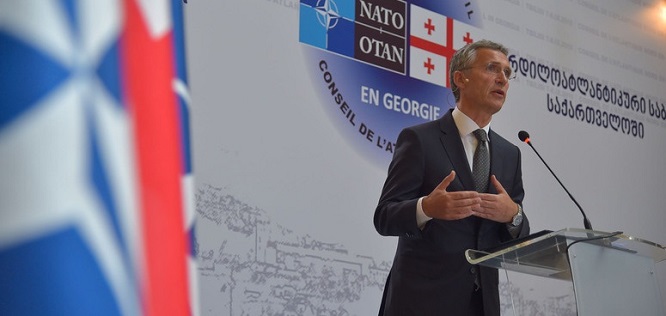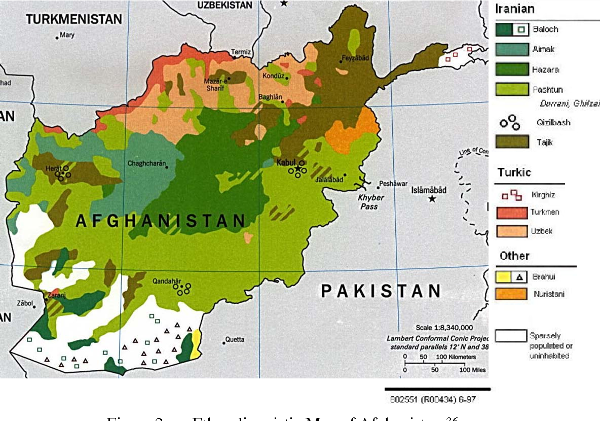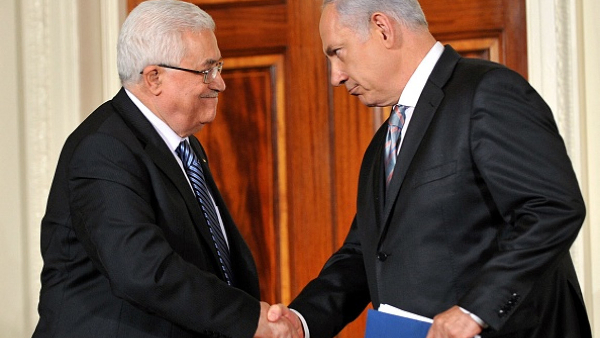The North Atlantic Treaty Organization (NATO) is wrestling with unprecedented rifts among its members states on the threshold of its 70th anniversary.

In a recent rift, the member states have been divided over the organization’s defense budget. The US Vice-President Mike Pence has recently criticized Germany’s defense policy and the NATO spending.
In fact, the anniversary to mark seven-decade life of the bloc was a showcase of the deep division among the members, rather than showing the unity and the convergence of stances. The occasion was a scene where the members clashed over the defense spending.
What are Inter-NATO challenges?
The dispute over the NATO financing is now the source of gaps inside the Western military organization. There are some political chasms too that endanger the future of the 29-nation bloc more than any time before.
Disagreement over the funding
Since the time Donald Trump became president of the US, tensions over the NATO budget’s kept escalating between Washington and main European powers, apparently Germany and France.
According to the NATO’s internal terms, each member should pay 2 percent of its gross domestic product (GDP) as a share to the NATO spending. But over the past years, the financial crisis forced down the standard payment, with many European states allocating less than the standards.
The clash over the military organization’s spending is not limited to Trumpís rule. Former President Barack Obama also faced the same challenge. During his speech on the 65th anniversary, Obama demanded that the other member states increase their defense spending as part of a roadmap to meet the enacted spending standards. But to his frustration, his call was met with a rejection.
The European rejection of the American calls for financing increase dragged on to Trump term. Trump administration’s demand from Europeans to increase their payments still stands. So far, only four countries— Greece, Estonia, Latvia, and Britain— have responded positively to Trumpís calls and others remain inattentive of Trump requests, something causing widening gaps between the US and major European powers.
Russian danger
Over the past few years, the tensions rose between Russia and NATO over Ukraine. NATO members took punitive measures against Moscow in 2014. Now the anti-Russian stances by the European leaders have grown even harsher. So far, a number of NATO states have called for larger spending in an open effort to curb Russia. But on the other side stands Trumpís government that disagrees with NATO budget promotion due to what some European powers call Russian danger. Trump insists that Europeans should take independent anti-Russian measures if they wish to punish Moscow and repel its risk to their collective security. This motivated France and Germany to call for a European army independent of NATO. The initiative has so far failed to garner adequate consensus inside the European Union.
Turkish challenge
Nearly a year ago, when Turkey’s bid to purchase the American-made Patriot air defense systems was rejected by Washington, the Turkish President Recep Tayyip Erdogan made a new bid this time to Russia to supply Turkey with the cutting-edge S-400 missile defense systems. Russia responded with an open hug to the Turkish demand. Erdogan several times said that the two countries finalized the system’s deal.
Washington, while a year ago rejected the Turkish request, now is unhappy with Ankara’s S-4oo purchase, arguing that the deal is harmful to the interests of NATO, in which Turkey is a member. Once Turkey buys and integrates the Russian defense system into its majorly Western systems, it will, in fact, allow Russia to infiltrate the NATO defense mechanism, something viewed with high-level concern by the Western governments. They argue that such integration makes the bloc open to Russian military threats, as Moscow will be able to gather intelligence on the capabilities of the Western defense structures.
Vague NATO outlook
In addition to the above-mentioned challenges, the Western military organization is grappling with structural crisis in relation to the range of its operations coverage and the distribution of duties. The lack of consensus, inequity of the member states in terms of economic and military power, and the historical competition between the two camps of Eurocentrics and “Atlanti-centrics” push the alliance far from cohesion. It seems that a collection of these challenges are far from settlement at least in the short run.
Moreover, the rise of right-wing politics in the West and some of Washington’s uncoordinated-with-EU positions push the European powers to more than ever seek a united Europe with highlighted independence of stances in relation to the US. Their aim revolves around a willingness to deepen inter-EU cooperation to broaden the security and military coordination. Such tendency poses a serious challenge to NATO existence philosophy.
The military organization is presently susceptible to undermining as the US president keeps his every-now-and-then attacks on it. Now the non-Western countries do not view NATO as a united and convergent power. Such a lack of prestige in the eyes of the world obviously makes the future of the bloc shrouded in mystery, meaning less hopes are now pinned on it.
LINK: https://www.ansarpress.com/english/10709
TAGS:






























 Violation of the sovereignty and rights of afghan citizens by America
Violation of the sovereignty and rights of afghan citizens by America




